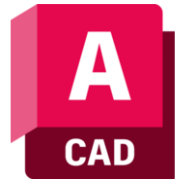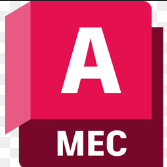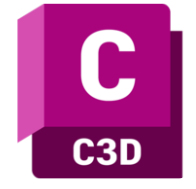Best Engineering CAD design software
CAD Design Software
CAD Design software packages are especially helpful for engineers who prioritize design. With this software, you can easily create 3D models of parts and assemblies. For instance, you can model each component of an engine individually, and then assemble them to ensure proper fit and function. Moreover, these tools allow you to verify that all components align correctly as intended. Below are some of the best engineering CAD design software programs frequently used by engineers for simulations, as well as for 2D and 3D designs.
AutoCAD
 AutoCAD is a versatile and industry-standard CAD (Computer-Aided Design) software developed by Autodesk, widely recognized for its ability to create both 2D and 3D designs, drawings, and models. It is commonly used by professionals across various fields, including architecture, engineering, construction, manufacturing, and other design-related industries. Moreover, AutoCAD enables users to create highly precise and detailed drawings of buildings, machines, electrical systems, and much more, making it an essential tool for accurate design work.
AutoCAD is a versatile and industry-standard CAD (Computer-Aided Design) software developed by Autodesk, widely recognized for its ability to create both 2D and 3D designs, drawings, and models. It is commonly used by professionals across various fields, including architecture, engineering, construction, manufacturing, and other design-related industries. Moreover, AutoCAD enables users to create highly precise and detailed drawings of buildings, machines, electrical systems, and much more, making it an essential tool for accurate design work.
Key Features of AutoCAD
- Helps create precise 2D drawings and technical documentation for architecture, engineering, and design projects.
- Build realistic 3D models, surfaces, and solids to visualize and analyze designs.
- Organize drawing elements using layers for easy control and focus on specific aspects.
- Create and reuse predefined objects, ensuring consistency and efficiency in drawings.
- Add text, dimensions, and notes to communicate design details clearly.
- Control object relationships and dimensions, automatically updating related parts when changes occur.
- Personalize tool palettes, shortcuts, and layouts to optimize workflow.
- Industry-Specific Toolsets: Specialized tools for architecture, electrical, mechanical design, and more.
- Automated Workflows: Automate repetitive tasks, like generating schedules and applying templates.
- Visual Styles and Rendering: Apply various visual styles or photorealistic rendering to enhance design presentation.
AutoCAD Mechanical
 AutoCAD Mechanical is a specialized version of AutoCAD tailored for mechanical engineering design. It enhances the core AutoCAD functionalities with a rich set of tools that streamline the design of mechanical components, parts, and assemblies. AutoCAD Mechanical is primarily used in manufacturing, automotive, and product design industries.
AutoCAD Mechanical is a specialized version of AutoCAD tailored for mechanical engineering design. It enhances the core AutoCAD functionalities with a rich set of tools that streamline the design of mechanical components, parts, and assemblies. AutoCAD Mechanical is primarily used in manufacturing, automotive, and product design industries.
Key Features of AutoCAD Mechanical
- AutoCAD Mechanical includes over 700,000 standard parts and components that comply with global standards like ANSI, DIN, and ISO.
- It automates tasks like creating views, sections, and BOMs, streamlining the design process.
- Specialized symbols and annotations, such as welding and surface texture symbols, are integrated for efficient drafting.
- Built on AutoCAD, it provides core functionalities with added mechanical design tools.
- The software automatically updates annotations, part numbers, and callouts when designs change, ensuring consistency and accuracy.
SolidWorks

Key Features of SolidWorks:
- SolidWorks lets users create 3D models based on dimensions and constraints.
- It effectively designs complex assemblies, ensuring all parts fit and function as expected.
- Integrated simulation tools, like FEA and flow analysis, validate designs under real-world conditions.
- SolidWorks excels in solid and surface modeling, enabling engineers to design complex freeform shapes like casings.
- With built-in simulation tools, users can apply forces, pressures, and simulate mechanical movements to test real-world performance.
- It seamlessly integrates with SolidWorks Electrical for managing complex electromechanical systems.
Autodesk Inventor
 Autodesk Inventor is a professional-grade 3D CAD software used for product design, mechanical engineering, and simulation. It’s particularly popular for designing complex mechanical parts, assemblies, and systems, allowing engineers to create detailed digital prototypes and test them virtually before physical production.
Autodesk Inventor is a professional-grade 3D CAD software used for product design, mechanical engineering, and simulation. It’s particularly popular for designing complex mechanical parts, assemblies, and systems, allowing engineers to create detailed digital prototypes and test them virtually before physical production.
Key Features of Autodesk Inventor
- Create accurate 3D models using parametric, direct, freeform, and rules-based approaches.
- Design and manage large assemblies with tools for precise part placement and assembly constraints.
- Use specialized tools to design sheet metal parts, unfold models, and create flat patterns.
- Run simulations to analyze part and assembly performance under different conditions.
- Automate repetitive design tasks with iLogic, which configures, and updates models based on predefined rules.
- Seamlessly integrates with Autodesk products like AutoCAD, Revit, and Fusion 360.
- Generate detailed 2D drawings from 3D models.
- Includes features to prepare designs for manufacturing processes like CNC machining, injection molding, and 3D printing.
Autodesk Civil 3D

Autodesk Civil 3D is a powerful civil engineering design and documentation software built on AutoCAD. Widely adopted by civil engineers and professionals in sectors like transportation, land development, water, and wastewater, it streamlines the design of complex infrastructure projects.
Key Features of Autodesk Civil 3D
- Dynamic Modeling: Users can easily maintain coordinated and up-to-date project data across all drawings, sheets, and documentation.
- Corridor Design: Civil 3D makes it possible to model complex corridors like highways and railways by integrating surfaces, alignments, and profiles.
- Grading: This feature allows civil engineers to create and manipulate 3D terrain models, making complex grading designs more efficient.
- Pipe Networks: It enables users to design and analyze pipe systems such as storm drains, sanitary sewers, and water networks with precision.
- Point Clouds: By integrating point clouds, Civil 3D allows engineers to work directly with reality capture data, such as LiDAR scans.
- Surveying Tools: It helps engineers import and manage survey data, including total station information, field books, and points, ensuring accurate topographical representation.
- Visualization: Civil 3D enhances communication by providing tools to visualize 3D models, helping stakeholders understand the design intent more clearly.